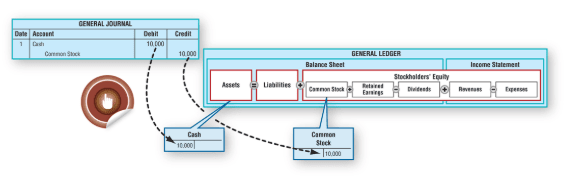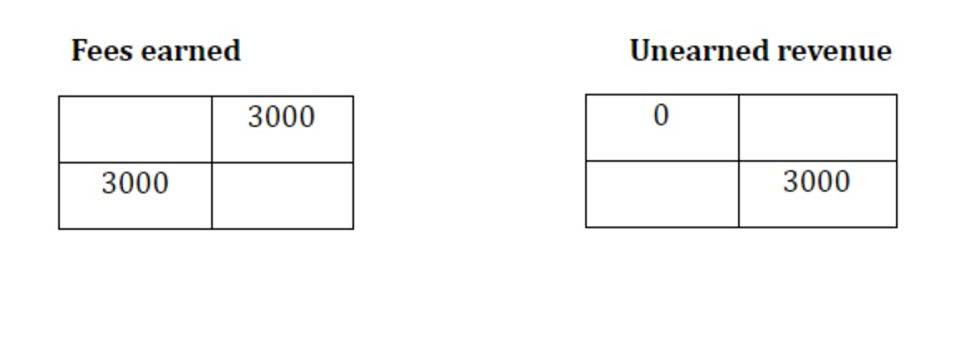
Securing in-kind donations is vital for any nonprofit or charitable organization, but just as important is accounting for them properly. In June 2020, the Financial Accounting Standards Board introduced changes to the General Accepted Accounting Principles (GAAP) for documenting and presenting the value of in-kind donations in financial statements. Master nonprofit accounting with insights on event revenue, cost allocation, in-kind contributions, sponsorships, auctions, and donor reporting. Once the organization receives the stock, a gaap accounting for donated assets contribution should be recorded at the fair value of the stock on the date received. If the organization incurs any fees related to the selling of the stock, that amount should be recorded as investment fees expense.
- This new requirement contained within FRS 102 is arguably not the manifestation of a new concept or principle.
- The company recognizes an expense for the fair value of the donated asset (e.g., Dr. Charitable Donations; Dr. Contribution Expense).
- Understanding the substance of the award is key to determining which accounting guidance to follow.
- Recording journal entries for donated assets ensures accurate financial reporting and compliance with standards.
Recording In-Kind Donations of Services:
- For donors, it is often easier to contribute items they no longer use or contribute services when they have extra capacity.
- The Charity CFO is your best option for outsourced accounting, from bookkeeping and financial statements to accounting for in-kind donations.
- Under Generally Accepted Accounting Principles (GAAP), organizations must recognize donated assets as revenue in the period they are received.
- This requires an assessment of what would be required to arrive at a reasonable estimate that would be suitable for use in preparing information for inclusion within the financial statements.
- You can easily record the receipt of donated items by following a few simple accounting rules and knowing how to determine specific values of items.
- Community engagement involves educating and involving community members about the importance and impact of their in-kind contributions.
Specifically, in-kind donations can no longer be recorded in the same line item as direct financial donations in the statement of activities. Instead of reporting aggregate contributions as a single line item, the financial statement must show a line item for financial contributions and a separate line item for in-kind contributions. At Smith + Howard, our arts and culture nonprofit accounting team works with a wide variety of clients with significant collections. We encourage organizations to proactively reach out to our team in advance of selling any collectible items. Our professionals are equipped to help organizations develop comprehensive accounting policies and navigate the process of selling valuable collectible items.

thoughts on “A Guide to Complying with Government Accounting for Fixed Assets”
- Nonprofits must fulfill specific reporting and disclosure requirements to maintain transparency and accountability.
- Technical accounting guidance does not use the term ‘grant’ as that word identifies the name or form of a transaction, but not its substance.
- Board members can also serve as ambassadors to the donor community, advocating for the importance of in-kind gifts and the organization’s transparency in handling such contributions.
- There is a common misconception among nonprofits that because in-kind donations are provided at little or no cost, the organization doesn’t have to report them on its financialstatements.
- Bravo Corporation (Bravo), a manufacturer of industrial products, pledged $750,000 for the event.
Maintaining financial transparency in non-profit organizations is crucial in the dynamic landscape of nonprofit organizations. According to the IRS, 1,365,744 nonprofit charitable organizations were recognized in 2019, with 304,231 filing Forms 990 and 990-EZ for that tax year. GASB 33, paragraph 7d, defines a donation as a balance sheet voluntary non-exchange transaction entered into willingly by two or more parties. Both parties may be governments or one party may be a nongovernmental entity, including an individual. A voluntary contribution of resources (capital assets) between state agencies is an interagency transfer of capital assets, not a donation. All such assets are divided into two categories on the balance sheet based on how quickly they can be turned into cash; current assets and non-current assets (also known as fixed assets).

4.2.2 Measurement exception for items donated for charity auctions

Compliance with IRS regulations is essential, requiring acknowledgment letters detailing the nature and value of contributions. Any positive sentiment from acting as a donor does not constitute commensurate value received by the provider for purposes of determining whether the transfer of assets is a contribution or an exchange. Omega Agency provides residential, rehabilitation, and day programs to individuals with disabilities and their families. Programs are funded by state government grants, Social Security Administration (SSA) and Medicaid fees, customer payments, and contributions.
Social Program Provider—Exchange Incorporating Indicators of Contributions

The nonprofit must disclose information on in-kind donations by category that depicts the type of nonfinancial asset. Since the HOA Accounting majority of nonprofit organizations choose not to capitalize their collectibles on their Statement of Financial Position, these appraisals are less important from a GAAP perspective. They are, however, invaluable in ensuring your organization has sufficient levels of insurance and also demonstrate a commitment to internal governance.
4.5 Liquidation of noncash gifts in the statement of cash flows

In an increasingly digital profession, data security has become one of the most critical challenges facing finance and accounting professionals today. Stay up to date with practical guidance to help you mitigate these risks and strengthen your security posture. The amendments take effect for annual reporting periods beginning after June 15, 2021, and interim periods within annual reporting periods beginning after June 15, 2022.
Two noncash donations that are common for nonprofit organizations to receive, but technically do not meet the definition of in-kind donations, are gift cards and stock. Gift cards should be recorded as an asset and contribution when received and then when used in operations or given out to clients, remove the asset and record the expense. Accurate valuation of non-cash contributions is a critical component of nonprofit accounting, ensuring that organizations reflect the true value of the donations they receive.

